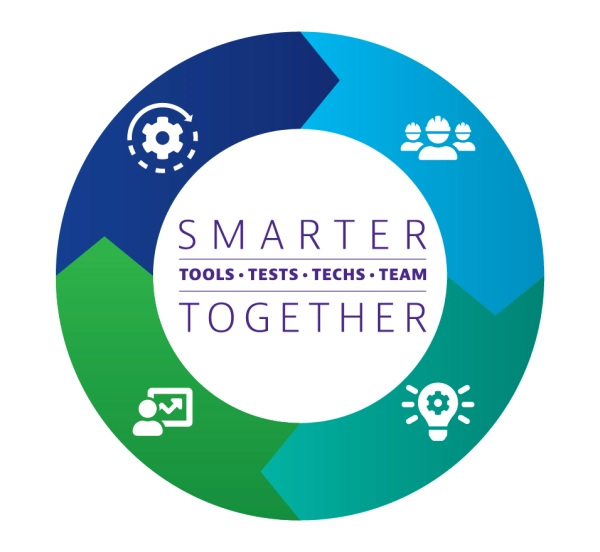Edge Computing
Solutions for Edge Computing Environments
Computing at the Edge with VIAVI
VIAVI empowers edge computing with an unmatched portfolio of solutions to ensure success throughout the network lifecycle. As design criteria and specifications for edge data centers crystalize, advanced emulation, verification, benchmarking, and certification tools for the lab contribute to downstream performance in the field. Automated data center test solutions for fiber certification, access testing, and application verification lead to more efficient and confident edge deployments.
Throughout the operational lifespan, VIAVI supports the need for remote, automated monitoring 24/7 to support analytics and deliver timely performance KPIs from unmanned (or lights-out) edge data center locations. With decades of experience spanning the network computing ecosystem, VIAVI also delivers the products and expertise to fully optimize the edge data center for power consumption, usage, and customer experience.
What We Offer
The diverse VIAVI test product offerings cover all aspects of edge computing and edge network construction, deployment, maintenance and monitoring. Distributed edge computing reduces system latency by bringing user plane applications and network functionality closer to the use case, making test and monitoring a key component of delivering reliability at the edge and an overall edge deployment strategy.
- Certification: The widespread adoption of MPO makes the INX 760 Probe Microscope an ideal solution for automated multi-fiber end face certification. Optical loss test sets (OLTS) designed specifically for the MPO interface, such as the SmartClass Fiber MPOLx, also make Tier 1 fiber certification easier and more reliable.
- High-Speed Test: Optical Transport Network (OTN) testing and Ethernet service activation must be performed quickly and accurately to support the high-speed requirements of edge computing. The versatile, cloud-enabled OneAdvisor 800 is designed to simplify the evolving network test needs of service providers, data centers, field technicians and contractors as they deploy, groom, and maintain a wide variety of wireline and wireless networks. The modular design of OneAdvisor 800 allows network technicians to easily switch between a multitude of test scenarios including transmission protocol, fiber, or over the air RF signals.
- Multi-fiber, All-in-One: Edge architecture also creates an ideal setting for automated OTDR testing through MPO connections. The multi-fiber MPO switch module is an all-in-one solution for MPO dominated, high-density fiber environments. When used in conjunction with the T-BERD test platform, fibers can be characterized through OTDR without the need for time-consuming fan-out/break-out cables. Automated test workflows for certification can be performed for up to 12 fibers simultaneously.
Automated Testing: Test process automation (TPA) reduces hyperscale construction times, manual test processes, and training hours. Automation enables efficient throughput and BER testing between hyperscale data centers and edge computing locations to support the end-to-end verification of complex 5G network slices.
- The SmartClass Fiber MPOLx optical loss test set brings TPA to Tier 1 fiber certification with native MPO connectivity, automated workflows, and full visibility of both ends of the link. Comprehensive 12-fiber test results are delivered in under 6 seconds.
- The handheld Optimeter optical fiber meter makes the “no-test” option irrelevant by completing fully automated, one-touch fiber link certification in less than a minute.
- Standalone, Remote Fiber Monitoring: Advanced, remote test solutions are ideal for scalable, unmanned Edge environments. With SmartOTU fiber monitoring, detected events including degradation, fiber-tapping, or intrusions are quickly converted to alerts, safeguarding SLA contracts and edge uptime. The ONMSi Remote Fiber Test System (RFTS) performs ongoing OTDR “sweeps” to accurately detect and predict fiber degradation throughout the network. OpEx, MTTR, and network downtime are dramatically reduced.
- Observability and Validation: The same machine learning (ML), artificial intelligence (AI), and network function virtualization (NFV) breakthroughs that enable 5G are also driving advanced edge computing test solutions
- Fusion arms network operators and data centers with a virtual service activation and performance management tool set, designed on industry standards, that deliver accurate test results on which managers and engineers can depend. Fusion monitors and ensures network performance and verifies Service Level Agreements in both virtual and physical networks.
- The Observer platform goes beyond traditional monitoring by intelligently converting enriched flow data and traffic conversation details into real-time health assessments and valuable end-user experience scoring.
- The flexible TeraVM software appliance is ideal for validating virtualized network functions. Key network segments including access, mobile network backhaul, and security can be fully validated in the lab, data center, or cloud.
Edge Computing Use Cases
The speed, latency, and bandwidth benefits common to access modes including mobile, WiFi, and wireline. In all cases, bringing the network closer to the user pushes performance to new heights, unlocking next generation use cases with unlimited potential.
- Advanced Driver-Assistance Systems (ADAS): A new transportation model based on ultra-low latency “vehicle-to-everything” communication is made possible by edge artificial intelligence and the IoT. This revolutionary use case includes connected or driverless cars, along with sensing and intelligence built into everything from traffic signs to toll booths.
- Factory Automation: The advent of “Industry 4.0” brings exponential efficiency improvement to autonomous robotics, material handling, and predictive maintenance processes. Next generation factory automation also establishes a benchmark use case for edge computing in concert with private 5G networks. Hybrid options ensure that sensitive factory information remains on premises.
- Connected Health: New 5G-enabled healthcare options include virtual consultations and vastly improved medical data management. Many of these life-saving applications rely on edge artificial intelligence and ultra-low latency to advance monitoring and treatment processes. Wearable IoT devices analyze vital patient data instantaneously, while remote surgical procedures globalize medical expertise and technology.
- Smart Ports: The benefits of edge computing can enhance the operation of ports by improving their efficiency and security. Opportunities include real-time asset tracking to prioritize workflows and IoT sensing backed by URLLC and AI to monitor container temperature, humidity, and surveyance (security) functions. Intelligence and automation at the edge also helps to orchestrate container and vehicle movements.
Application Notes
Posters
Quick References
White Papers & Books
Let Us Help
We’re here to help you get ahead.

